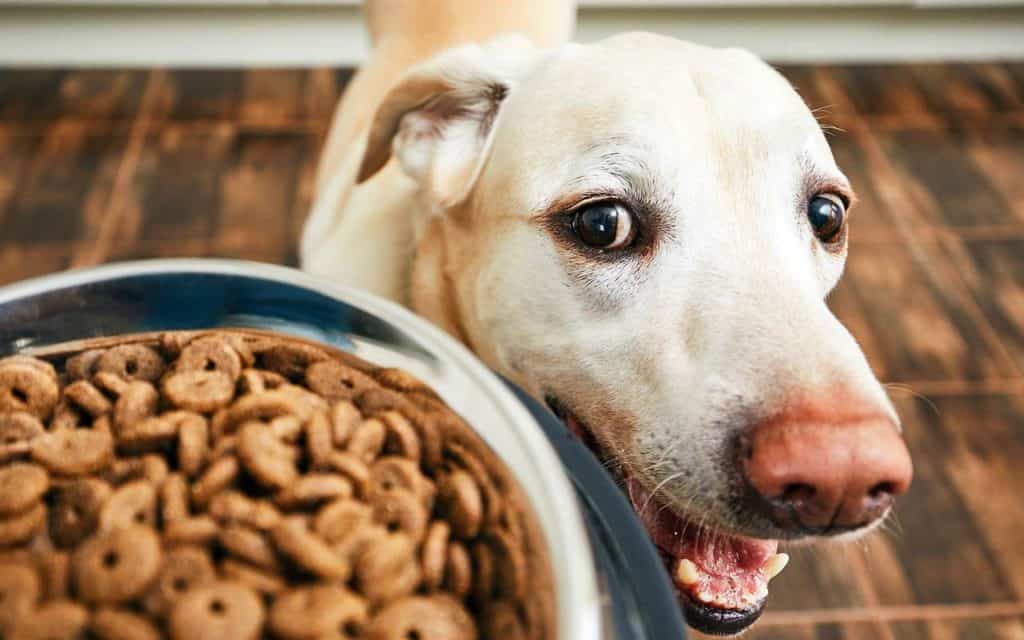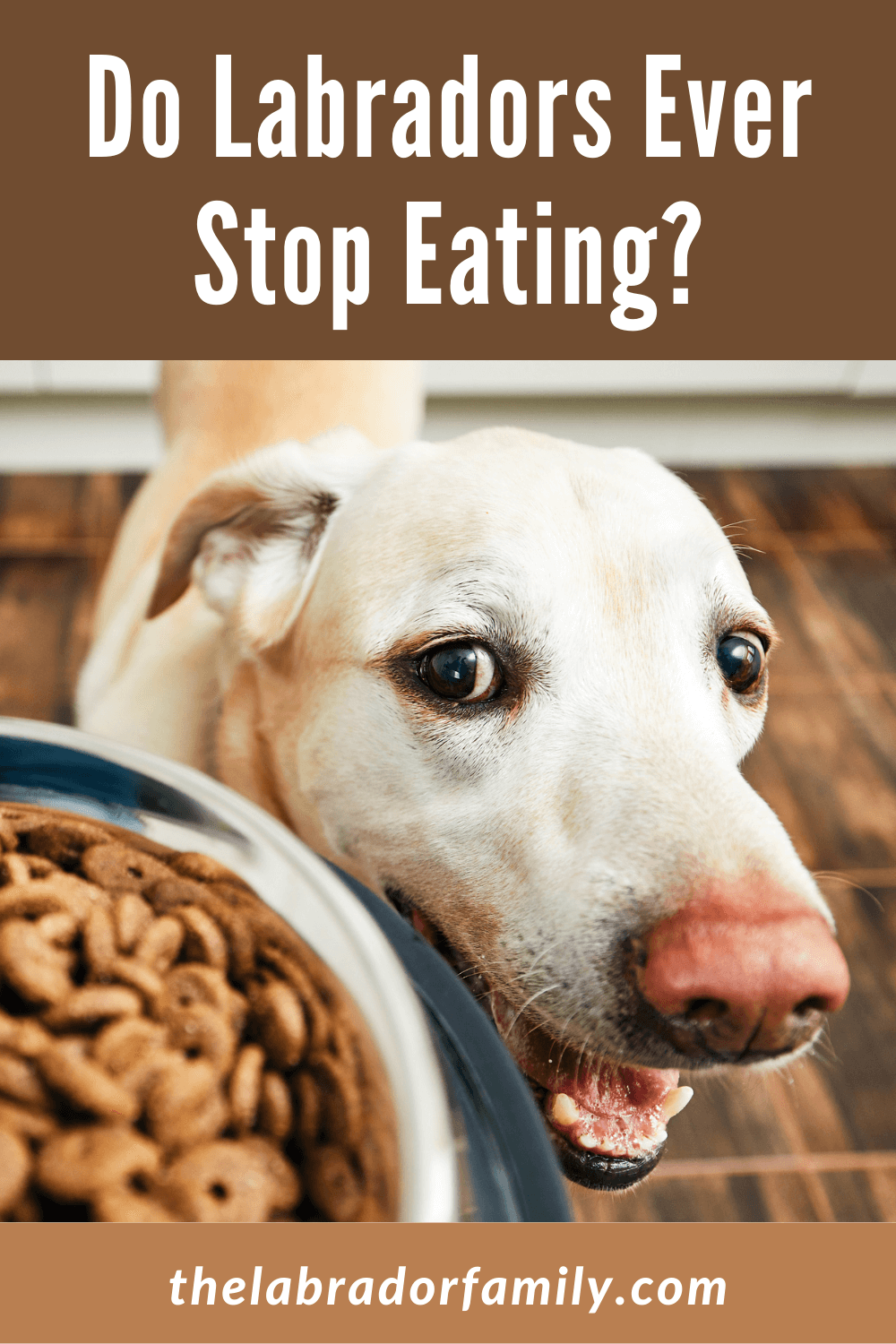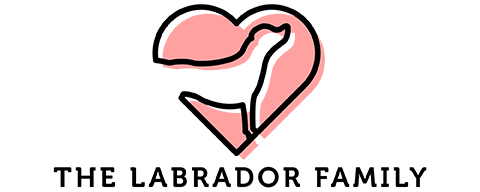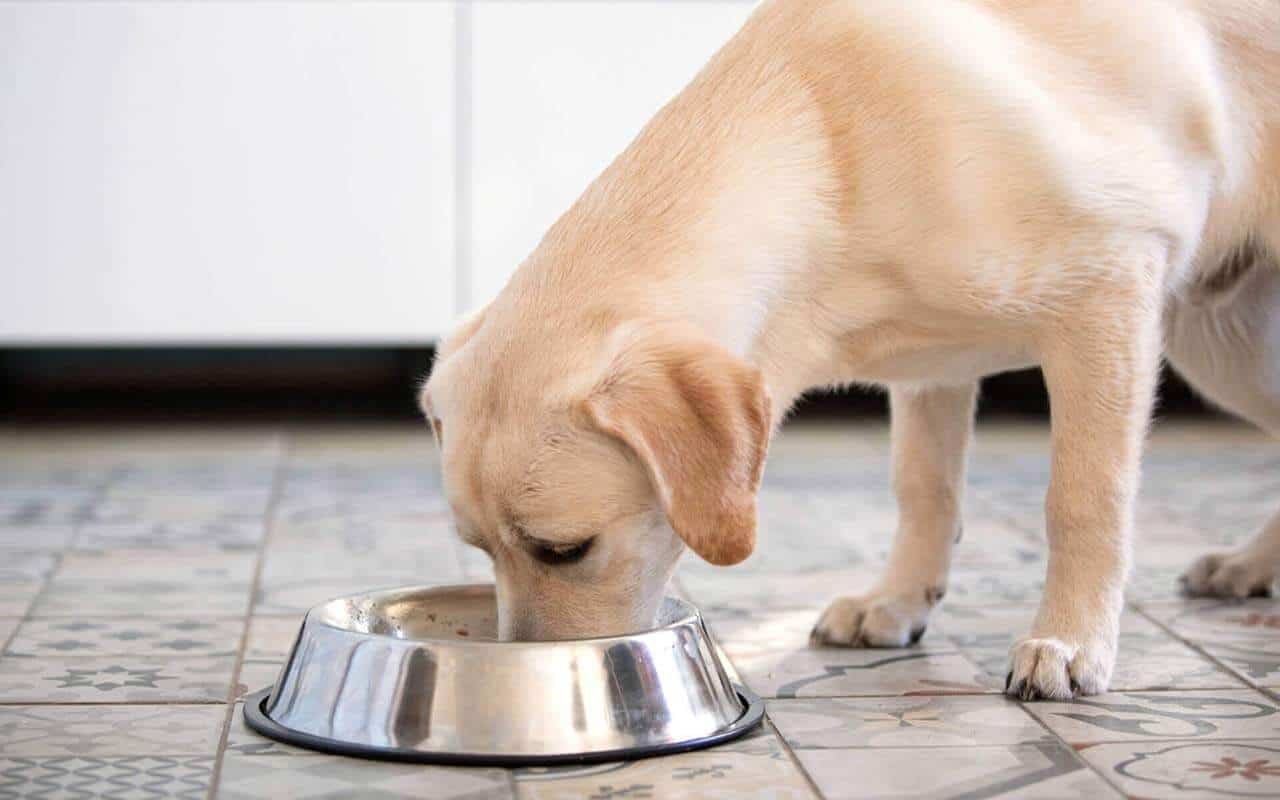Besides their intelligence, willingness to please, and ability to work hard, Labradors are known for their insatiable appetite. These adorable canine companions can rarely turn down a meal or a treat and, as such, are highly likely to become obese if fed without caution. So why are labs such serious feeders?
Most labs have insatiable appetites due to mutations in the POMC gene, which, once altered, affects appetite regulation. Labs can continue eating despite being full, thereby leading to obesity. You can avoid this by regulating its food portions.
In this article, I’ll take a closer look at why labs tend to eat a lot and ways to regulate feeding behavior to keep your four-legged best friend’s weight (and health) in check. I’ll also provide a simple feeding chart to guide you on proper practices.
Why Your Labrador Eats a Lot
While a Labrador’s over-the-top feeding habits are mostly due to gene mutation, several other factors can also play a hand in the breed’s seemingly insatiable appetite. In this section, I’ll take a closer look at some of the reasons Labradors tend to eat a lot.
– Your Labrador Is Hungry
As naturally active and energetic dog breeds, it’s totally understandable that labs love their mealtime. These large breed dogs will attempt to eat anything they can lay their paws on, especially when hungry.
And as you might be aware, a hungry lab can prove destructive, more so when it starts chewing everything along its path.
So, it’s crucial to observe a strict meal schedule for your pet. While adult labs can eat several types of kibble or wet food, puppies require food containing a good amount of calcium for proper bone formation.
Observing consistent meal schedules will give you the peace of mind that your lab is fully satisfied despite his unusually high appetite. Even more importantly, a meal schedule will ensure your lab doesn’t overfeed, which is crucial considering the breed can hardly turn down a meal or treat.
– Genetics
Labrador Retrievers have a mutation in their Pro-opiomelanocortin (POMC) gene, which prevents them from feeling satisfied after a meal. And while this doesn’t affect all labs, most labs with POMC mutation are usually obese as their bodies fail to communicate that they’re full after a meal.
Therefore, if mealtimes for such labs aren’t regulated, they’re almost certainly guaranteed to become obese, which in turn exposes them to a myriad of health conditions.
Maintaining a regular meal schedule and feeding your lab a balanced diet is the surest way to mitigate the risks of obesity.
And while your lab’s cute eyes might tempt you to hand him a treat, it’s best to stand firm and avoid feeding it outside meal schedules as it can lead to otherwise preventable health conditions that can reduce its lifespan.
– Your Labrador Is Sick
Excessive eating can also be a sign that your canine companion is sick. Certain medical conditions like Cushing’s disease and canine diabetes can leave your dog feeling hungry more than usual.
For instance, Cushing’s disease, a condition that causes the excess secretion of cortisol (steroid hormone) in the adrenal glands, more often than not leads to excessive thirst, urination, and hunger.
Your Labrador will also consume more food than usual it has canine diabetes — exactly why you should keep a close eye on your pup’s feeding behavior.
Therefore, if you notice that your Labrador is hungrier than usual despite maintaining a regular feeding schedule, book an appointment with your vet. Excessive hunger can signal an underlying condition, so act fast to resolve it sooner than later!
– Your Labrador Is Bored
As large breed dogs, labs need lots of mental and physical stimulation to thrive. If you don’t allow your Labrador to exert its energy, chances are it’ll develop destructive behavior like chewing and attempting to eat everything.
The AKC reveals that adult Labradors need at least 80 minutes of high-quality exercises every day. Otherwise, it’ll probably get bored and seek alternative ways to expend its energy reserves if it doesn’t have enough time to exercise daily.
Therefore, if your lab is attempting to chew every item and even swallowing non-food items, it’s best to revise its exercise schedule as it’s probably in need of more playtime.
You’ll notice a significant reduction in destructive behavior once you allocate more time for play and physical exercises.
– Anxiety
Dogs tend to eat a lot when anxious or stressed. If your lab is highly attached and dependent on you, chances are it might develop separation anxiety when you’re away. Signs of anxiety include:
- Trembling
- Pacing
- Panting
- Excessive eating
If you notice signs of anxiety in your lab, it’s best to train and reassure your pet that it’s normal for you to leave.

How To Stop My Lab From Eating Everything
There’s no silver bullet to stop your furry companion from eating a lot. Even when full, your Labrador is likely to give you those cute teary eyes and beg for more food and treats. However, narrowing it down to the cause of the issue can help you solve it, as explained below.
– Identify When the Problem Started
Try to recall when your lab first exhibited unusual feeding behavior. If the excessive eating is abnormal and worsening by the day, you might need to seek your vet’s opinion as there might be a diet or health-related issue.
– Speak to Your Vet
Visit a trusted vet if you suspect your lab might have underlying medical problems. While observing your Labrador for a day or two might work, it’s best to take it to the vet for further assessment if the feeding habits get out of hand.
– Make Sure They Exercise Well
As a large breed dog, you should ensure your canine companion exercises well so that it can expend its energy reserves. Lack of exercise will lead to boredom, which increases the chances of destructive behavior. Consider allocating more time for its play and exercise needs.
– Create a Solid Meal Schedule
As a good rule of thumb, you should set up a meal schedule for your Labrador. Ensure you line up healthy, well-balanced meals, whether kibble, wet foods, or a raw diet.
A poor diet increases the chances of obesity and canine diabetes, diseases that, besides lowering your lab’s quality of life, will almost certainly reduce its lifespan.
Simple Labrador Feeding Chart
How much you feed your lab depends on its age and weight. Here’s a rough estimate:
- 0 to 45 Days: It would be best for your Labrador puppy to nurse from mom for up to 8 weeks. However, you can start the weaning process around 6 weeks after birth.
- 45 Days to 3 Months: You can introduce your puppy to solid starter foods at around 45 days to 3 months old. These should be given 3–4 times a day, totaling 200–300 grams (7–10 oz) a day. This means you should divide the meals into 50–55 grams (1.76–1.94 oz) per serving.
- 3 to 6 Months: At this age, your lab puppy needs to be fed twice a day, totaling 300-450 grams (10-16 oz) per day. You can feed your pup 3 times a day during the third month (3×100 grams (3.5 oz)) before switching to 2×175–200 grams (6–7 oz) servings after the fourth month.
- 6 to 15 Months: Your lab is fairly grown at this age, which means it requires a high daily energy intake of over 400 grams (14 oz). Target 2×225 grams (7 oz) servings every day, which should translate to around 450 grams (15 oz) per day.
Note that the above feeding chart is generalized and therefore shouldn’t be used as the gold standard for feeding all Labrador pups. You should alter your lab’s feeding schedule depending on age, weight, and type of food.
Consulting a vet is highly advisable to ensure your lab has a balanced diet that promotes healthy growth.
Wrapping Up
If you’re wondering if your Labrador will ever stop eating, the answer is no! These large breed dogs are suckers for food and will rarely pass the opportunity to gobble up a snack.
However, since labs are predisposed to obesity and other diet-related disorders, it’s crucial to monitor and regulate your four-legged family member’s diet.
Avoid giving in to its treat and meal demands by setting up (and observing) a strict meal schedule. Consulting with a vet about dietary needs is also recommended, especially if it’s your first time raising a lab pup.
Save To Pinterest

Readers Also Liked:



